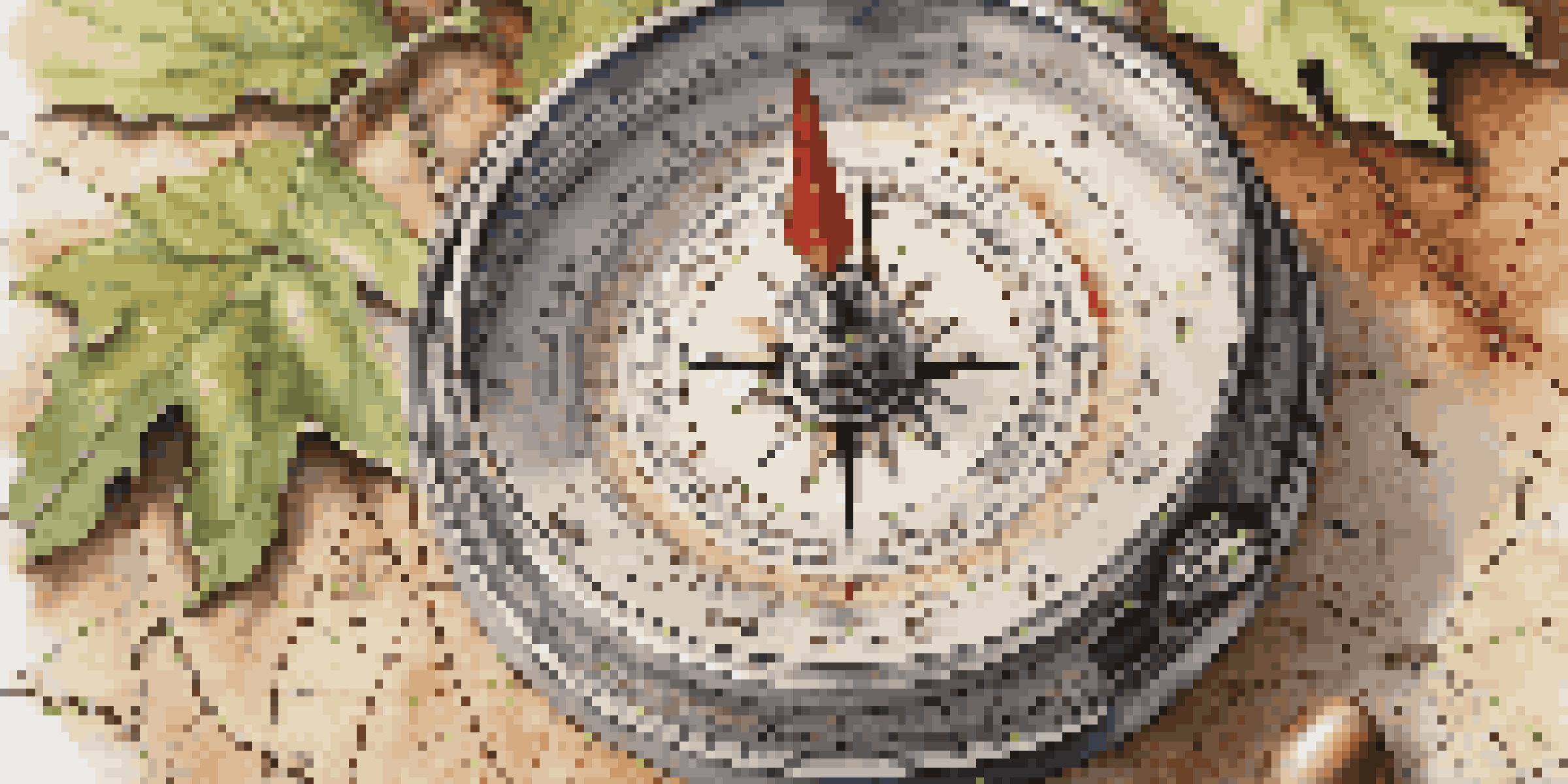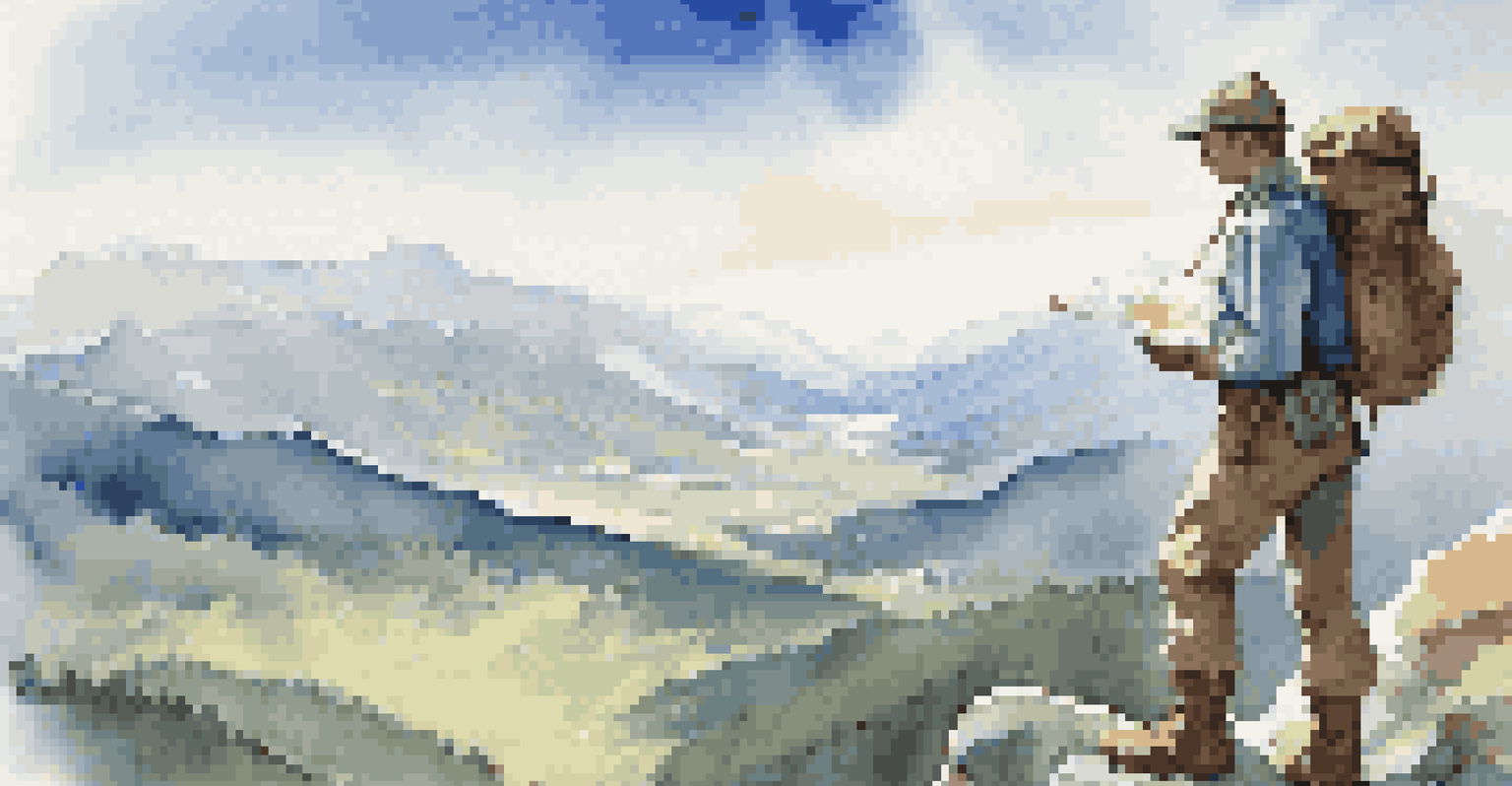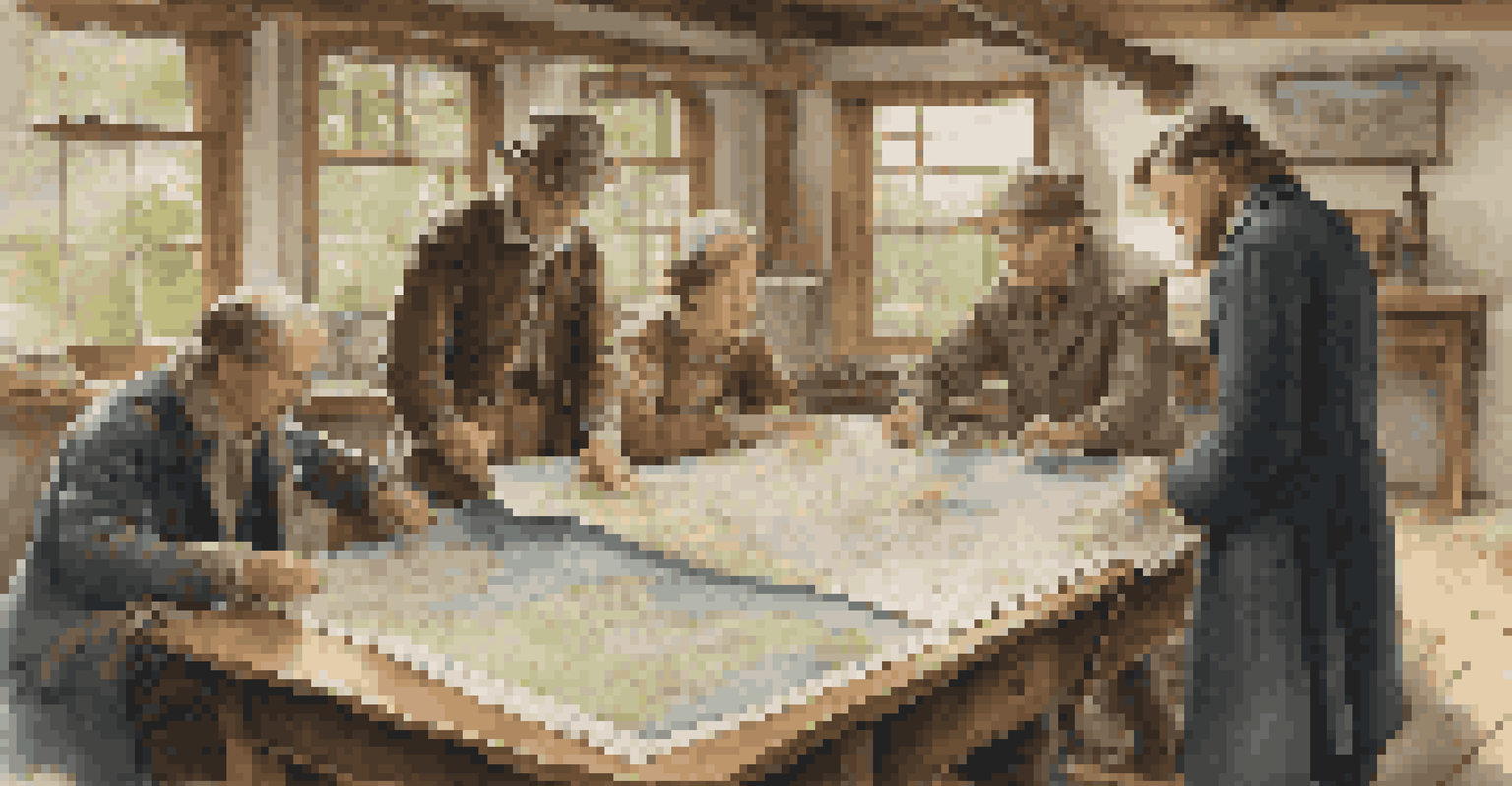Navigating the Wilderness: Essential Map and Compass Skills

Understanding the Importance of Navigation Skills
Navigating the great outdoors can be both exhilarating and daunting. Having solid map and compass skills is crucial for ensuring your safety in unfamiliar terrain. After all, getting lost in the wilderness can quickly turn an adventure into a survival situation.
Not all who wander are lost.
Good navigation skills provide a sense of confidence and independence, allowing you to explore with peace of mind. You’ll be able to appreciate your surroundings more fully when you know how to find your way around. Plus, it’s a great way to challenge yourself and learn something new!
In today’s digital age, it’s easy to rely on GPS technology, but understanding traditional navigation methods is invaluable. Technology can fail, but the skills you develop with a map and compass can serve you well in any outdoor scenario.
Types of Maps and Their Uses
Not all maps are created equal! Different types of maps serve various purposes, and understanding these differences is key to successful navigation. Topographic maps, for instance, provide detailed information about elevation, terrain, and natural features, making them indispensable for hikers and campers.

Another type is the road map, which is ideal for navigating urban or suburban areas but lacks the detail needed for rugged landscapes. Then there are specialized maps, like nautical charts for boating or wildlife maps for tracking animal habitats. Choosing the right map for your journey can make all the difference.
Navigation Skills Ensure Safety
Having solid map and compass skills is crucial for ensuring your safety in unfamiliar terrain.
Familiarizing yourself with map symbols and legends will enhance your navigation skills. These elements convey essential information about the terrain, helping you plan your route effectively and avoid potential hazards.
Essential Compass Components and Functions
A compass may seem like a simple tool, but it’s packed with essential components that aid in navigation. The most significant part is the magnetic needle, which always points to magnetic north, allowing you to orient yourself. Familiarizing yourself with the compass dial and its markings is crucial for accurate navigation.
The journey of a thousand miles begins with one step.
Other important features include the baseplate, which helps you take measurements and plot your course, and the rotating bezel, allowing you to set your bearing. Understanding how to use these components together will significantly improve your navigational skills.
It's also vital to understand the difference between magnetic north and true north. While your compass points to magnetic north, maps are often oriented to true north, which means you need to adjust your readings accordingly to avoid getting lost.
How to Read and Interpret a Topographic Map
Reading a topographic map might seem intimidating at first, but with a little practice, it becomes second nature. The contour lines on the map represent elevation changes, helping you visualize the terrain. Close lines indicate steep slopes, while widely spaced lines suggest gentle hills or flat areas.
In addition to elevation, topographic maps highlight various features, including rivers, forests, and trails. Being able to recognize these features will help you plan your route effectively and navigate obstacles along the way.
Types of Maps Enhance Navigation
Understanding different types of maps and their uses is key to successful navigation in various environments.
Practice by comparing the map to your actual surroundings. This will help reinforce your ability to identify features and develop a better understanding of how to navigate using a topographic map.
Taking and Following Bearings with a Compass
Taking a bearing is essential for navigating from one point to another. To do this, you’ll align the compass with your desired destination and adjust for declination to ensure accuracy. Once you have your bearing, you can set off confidently, knowing you’re heading in the right direction.
Following a bearing requires more than just walking straight; it involves regularly checking your compass and adjusting your course as needed. Obstacles like hills or rivers may force you to deviate, so being able to recognize when to recalibrate is crucial.
Practicing this skill in different environments will enhance your confidence. The more you navigate with a compass, the more intuitive the process will become, allowing you to enjoy your wilderness adventures fully.
Combining Map and Compass Skills for Effective Navigation
Now that you have a grasp of both map and compass skills, it’s time to combine them for effective navigation. Start by identifying your current location on the map and planning your route. Using the compass, take bearings for each leg of your journey, ensuring you stay on track.
Regularly checking your map and compass will help you maintain awareness of your surroundings. By cross-referencing your position with landmarks and terrain features, you can confirm that you’re heading in the right direction.
Practice Builds Confidence Outdoors
Regular practice of navigation skills in real-life scenarios enables you to explore the outdoors confidently.
This combination of skills will not only help you navigate effectively but also enrich your outdoor experience. The more you practice, the more comfortable and confident you’ll become in the wilderness.
Practicing Navigation Skills in Real-Life Scenarios
Like any skill, practice makes perfect when it comes to navigation. Start small by navigating local parks or nature trails with a map and compass. This will allow you to apply what you’ve learned in a controlled environment without the pressure of vast wilderness.
As you gain confidence, challenge yourself with more complex routes and varied terrains. Consider joining a local hiking group or taking a navigation workshop to learn from others and share experiences. Getting feedback from experienced navigators can accelerate your learning.

Remember, the more you practice, the more comfortable you will become. Embrace each opportunity to navigate, and soon you’ll find yourself confidently exploring the great outdoors.